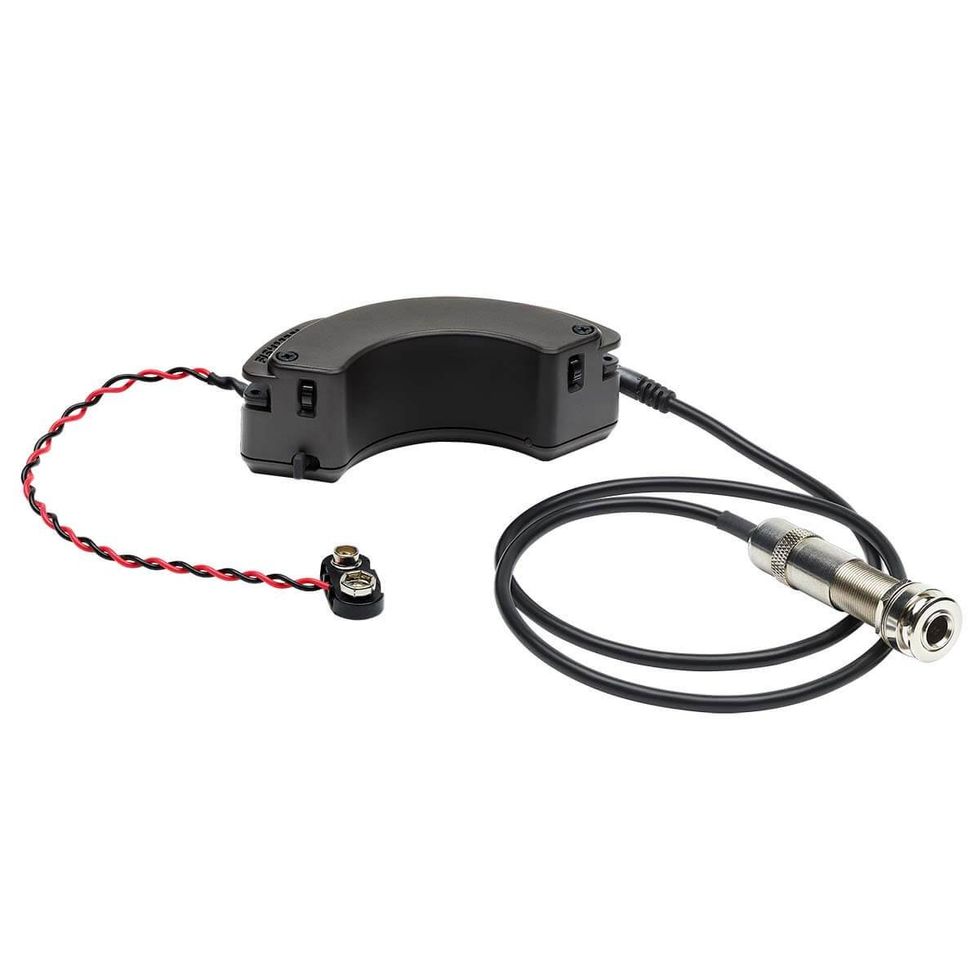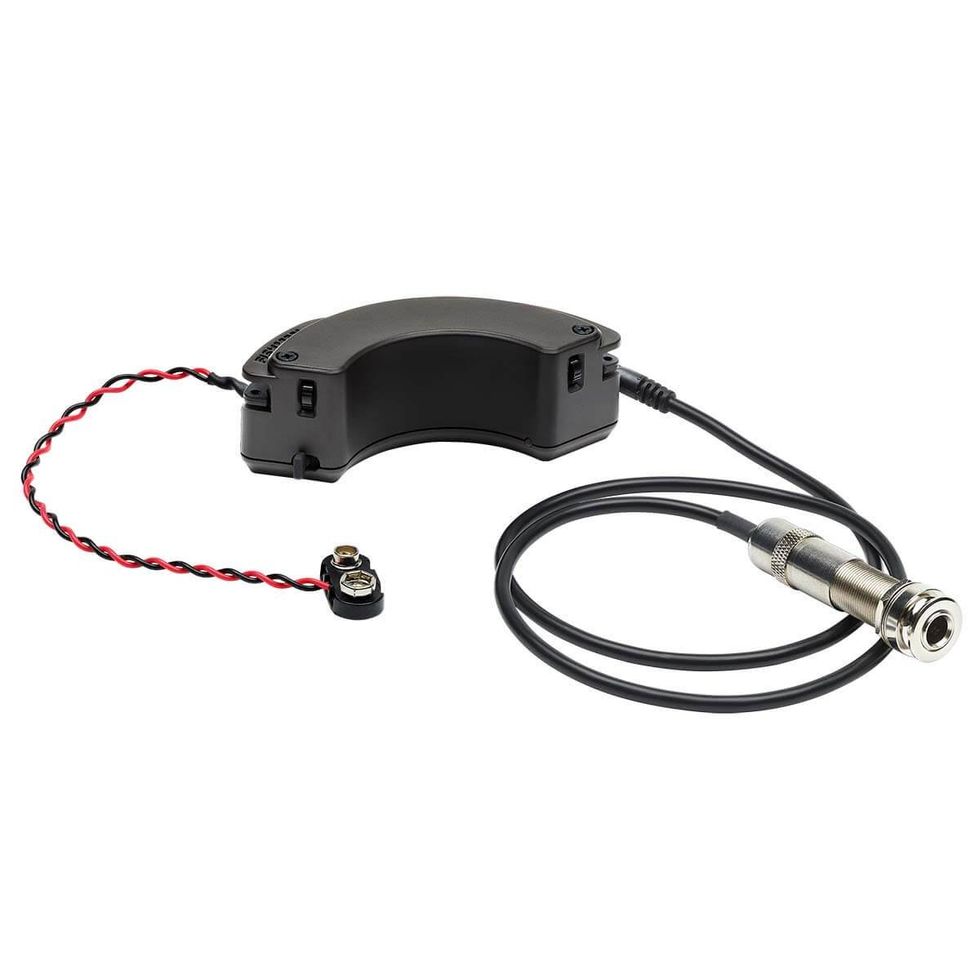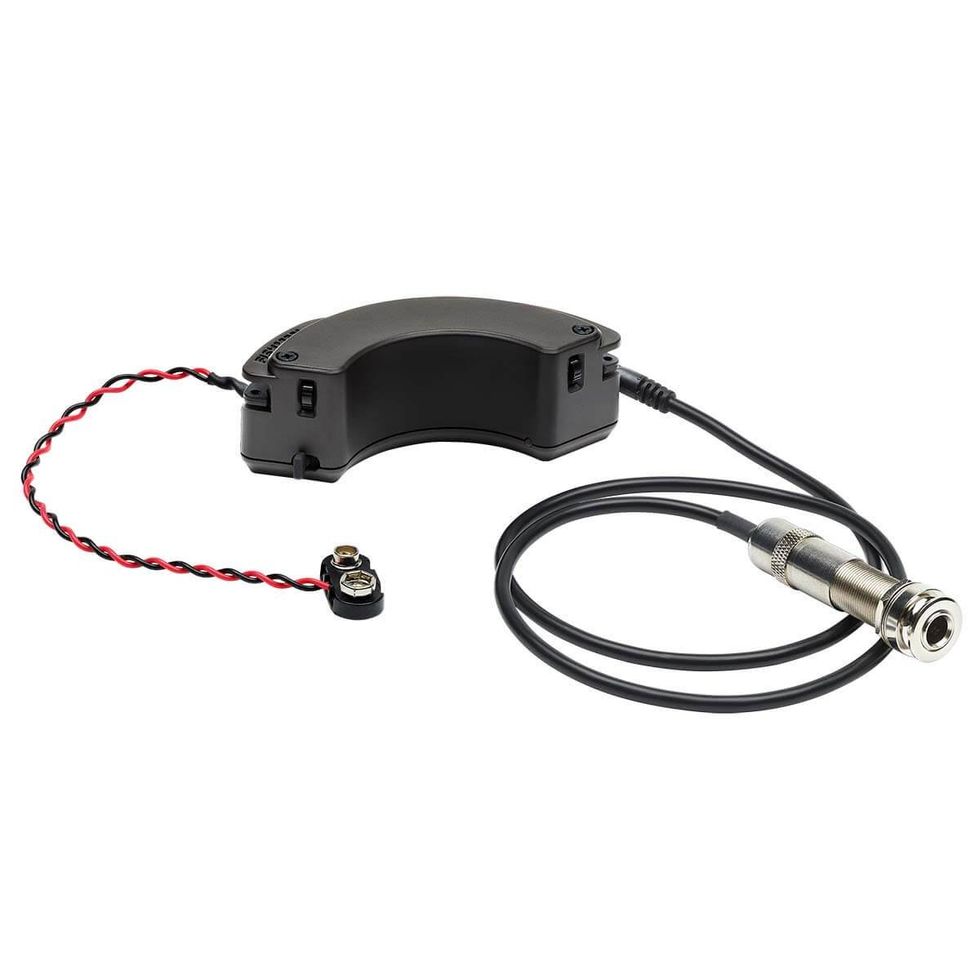Call me a freak, but some of my favorite Led Zeppelin moments happen when Jimmy Page is cruising or dreaming away on his Fender Electric XII. The middle section of “Stairway to Heaven,” “When the Levee Breaks,” “The Song Remains the Same”—all of these songs are made Technicolor, widescreen, and extra enormous by the Electric XII, which enhances the contrasts so critical to Page’s light-and-shade arrangement ethos and enlivens the pastoral threads that are such a vital facet of Led Zeppelin’s first five records.
If sound alone guaranteed success, the Electric XII would have been an enduring cornerstone of Fender’s line. Players with 12-string proclivities from Pete Townshend to the Velvet Underground’s Lou Reed and Sterling Morrison adored the Fender XII for its zingy-to-robust tones, playability, and the resonance derived from potent pickups and a 25½” scale. Wider appeal, however, always seemed limited to studio hounds and dedicated psychedelicists. Its initial run spanned just four years, from 1965 to 1969. The recent Alternate Reality series version had an even shorter lifespan. But the combination of sound, quality, familiarity, and affordability that distinguishes the Squier Paranormal Jazzmaster XII suggests that this new Fender-designed electric 12 could have staying power. It’s a beautiful, well-crafted instrument. And at $449, it’s priced less like an indulgence for a guitar that may be a secondary instrument.
Jangle Evolutions
The China-built Paranormal Jazzmaster XII isn’t Fender’s first attempt at adding six extra strings to a proven, popular design. The Japan-made Stratocaster XII appeared in the late 1980s and was in and out of the Fender roster right up until 2019. But the Jazzmaster XII draws a much straighter line to the legendary Electric XII. The body shapes are nearly identical. And were it not for the Jazzmaster pickguard and the slimmer, less extroverted take on the Electric XII’s polarizing hockey-stick headstock, you could mistake the Jazzmaster XII for an Electric XII, or, for that matter, a regular Jazzmaster, at a glance. Indeed, there is something harmonious and balanced about the union of the graceful Jazzmaster form and the smaller hockey-stick headstock that begs the question: Why haven’t Fender designers tried this before?
Even if you’re an experienced 12-string player, switching between 12 and six strings can feel alien. And part of what makes the Electric XII and the Stratocaster XII so inviting is their balanced, contoured bodies. The Paranormal Jazzmaster XII shares this advantage. The poplar body is light and, to my eye, slightly thinner than vintage and vintage-reissue Jazzmasters. The light weight makes the Jazzmaster XII prone to neck dive, but it’s not so severe that you feel like you’re propping the neck up as much as playing. The maple neck is reinforced with graphite in addition to a single truss rod to counter the extra string tension. It’s fashioned in a standard C shape, which feels thinner than necks on vintage Electric XIIs or Rickenbacker 12-strings. I find those thicker shapes can be effective protection against 12-string hand fatigue. But many players will enjoy the familiarity and fast feel of the C shape.
“Curiously, the neck pickup gives the octave and unison strings more room to sing, as well as low-end mass that makes it an ideal setup for doubling anemic rhythm parts.”
The bridge, which was likely sourced or built under license from Gotoh (it looks identical to Gotoh 12-string bridges seen elsewhere), facilitates easy action and intonation adjustments. The lower-octave strings are routed through the body and over saddles that are adjusted for action with two small Allen screws, and for intonation via a spring-loaded screw that is affixed to the back of the tail piece. The high-octave and unison strings, meanwhile, are top-loaded and routed over saddles that you intonate by loosening an Allen screw and sliding them across the bridge plate. It’s a smart design that also enables a compact, elegant footprint for the bridge and makes string loading less confusing. The slotted tuners on the new, slimmer headstock make string changes easy, which is no small consideration on a 12-string. They sometimes feel imprecise, however, which is not fun with six extra strings in the mix.
The Ring’s the Thing
Both pickups in the Jazzmaster XII are Fender-designed alnico units (presumably the same pickups used in the well-regarded Squier Classic Vibe Jazzmaster), and they give the Jazzmaster XII a unique voice. The bridge pickup sounds punchy, focused, and very much in the spirit of an Electric XII. But it can also sound a bit boxy, less airy, and prone to overdrive when compared to an Electric XII’s wide-spectrum tone or the zing of Rickenbacker toaster tops. In fact, I often turned the treble on a Deluxe Reverb up unusually high to generate adequately chiming Byrds-ian top end, only to obscure harmonic detail from the octave strings. Curiously, the neck pickup gives the octave and unison strings more room to sing, as well as low-end mass that makes it an ideal setup for doubling anemic rhythm parts. The star of the show, however, is the combined-pickup setting, where the strongest attributes of each pickup sum as a whole greater than its parts. Not coincidentally, the combined setting is considered a strength of the 6-string Jazzmaster. Here, though, the two pickups together generate oxygenated, open sounds with strong fundamentals and radiant overtones. Adding just a touch of compression and chorus can send the combined setting to even more kinetic and heavenly heights (a prescription that, incidentally, works wonders for the bridge pickup, too).
The Verdict
Though probably viewed as interchangeable by players that use them infrequently, electric 12-strings have personalities as distinct as any 6-string. The Paranormal Jazzmaster XII resides primarily on the fuller, thicker, and more aggressive side of the 12-string spectrum. You may have to hunt a bit to find voices that approximate vintage Electric XII, Rickenbacker, or Vox tones, and you may not always find the note-to-note balance or headroom required to get there. But the combined pickup settings in particular offer vintage-hued sounds that can fill those shoes with style and elan while offering less orthodox and, just maybe, more intriguing and distinct alternatives.












![Rig Rundown: Russian Circles’ Mike Sullivan [2025]](https://www.premierguitar.com/media-library/youtube.jpg?id=62303631&width=1245&height=700&quality=70&coordinates=0%2C0%2C0%2C0)














